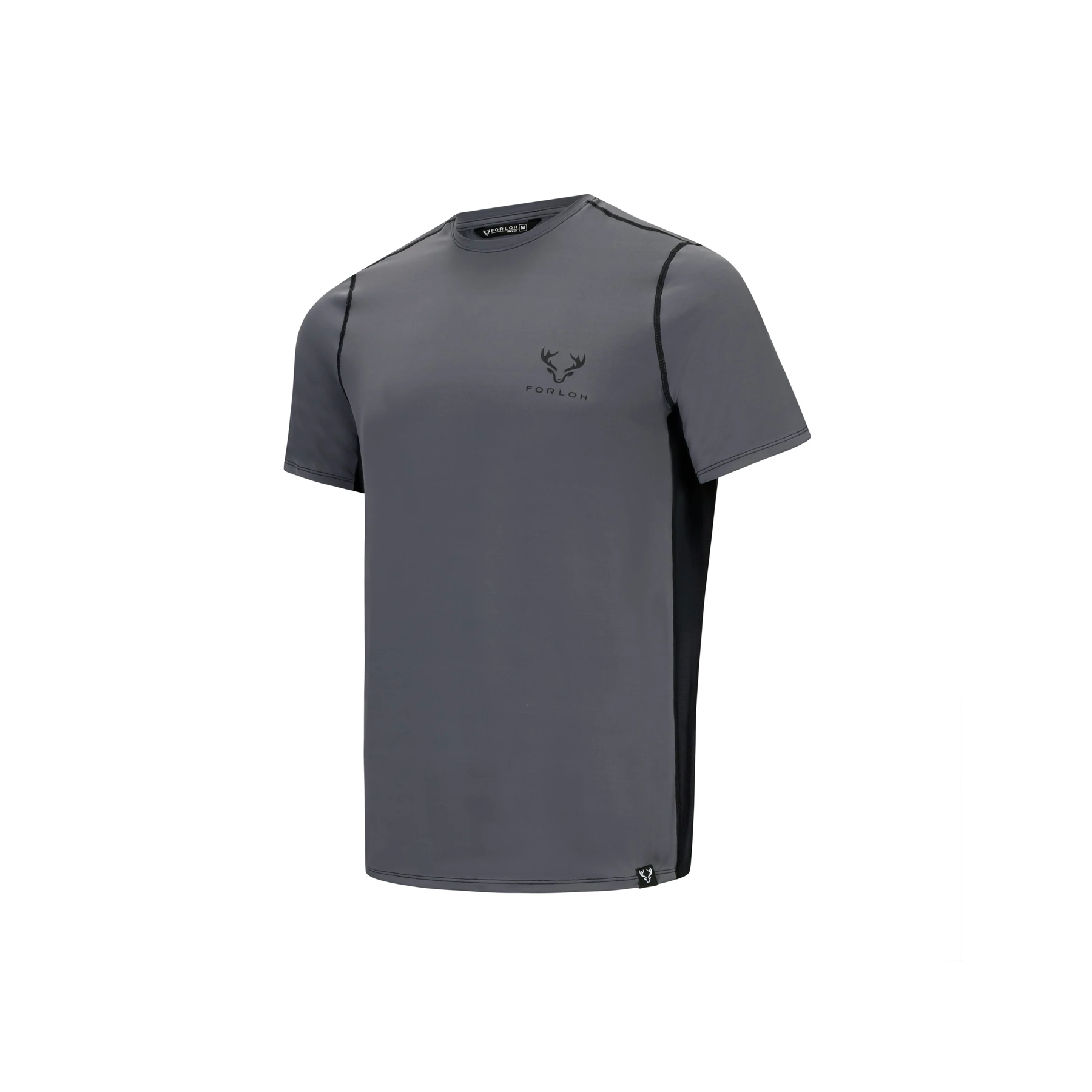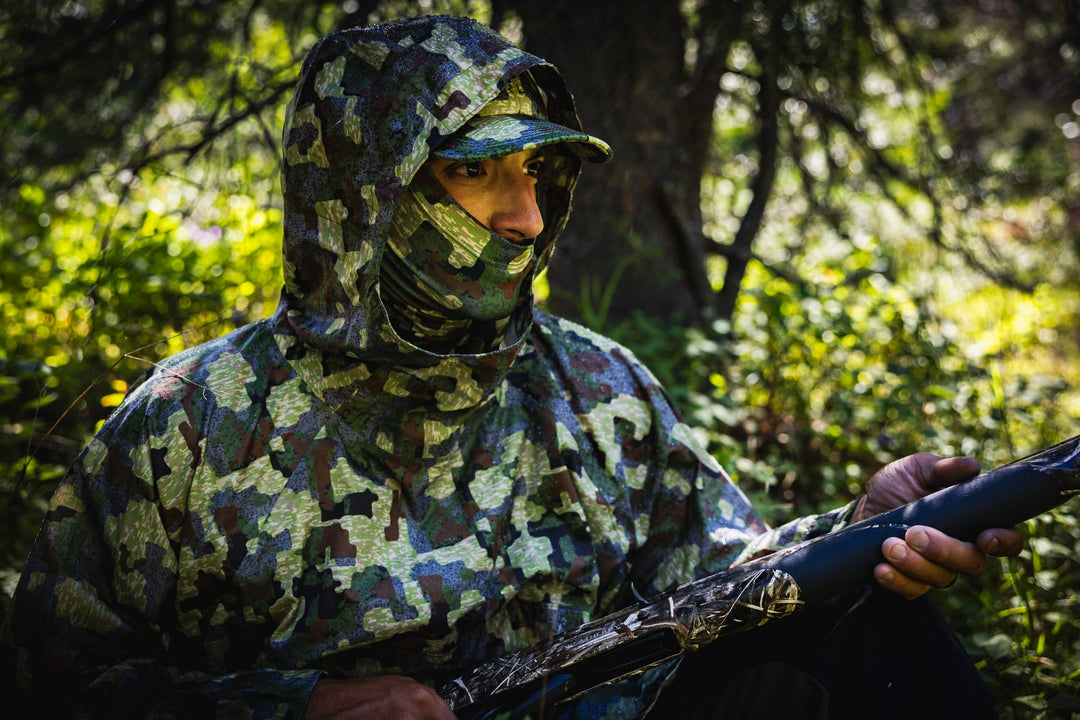Deciding what to wear fishing matters more than you might think, whether you're casting from shore, wading into a stream, or heading offshore for deep-sea fishing. Choosing the right fishing apparel can make the difference between a long, miserable day in the elements or a dry, cool, and comfortable experience on the water.
In this guide, we’ll break down exactly what to wear when fishing in different climates and environments. You’ll find expert-backed guidelines, clothing suggestions, and answers to frequently asked questions. Get ready to hit the water prepared and protected.
|
Table of Contents |
Why the Right Fishing Clothes Matter
Wearing the wrong gear on a fishing trip can lead to sunburn, bug bites, soaked clothes, or cold chills. The right fishing apparel helps you fish longer and more comfortably. Here’s why it matters:
- Comfort: Breathable, lightweight materials help regulate body temperature, even during long hours under the sun.
- Protection: Quality fishing clothes shield you from harmful UV rays, unexpected rain, biting insects, and abrasive gear.
- Performance: Features like moisture-wicking, quick-dry fabrics, and stretch mobility make your clothes work with you, not against you.
- Safety: Proper footwear and layering reduce the risk of slipping or exposure-related illness when the weather shifts.
Choose Fishing Apparel by Environment & Conditions
Your fishing environment shapes your clothing needs. What works for a summer lake trip may not be ideal for a deep-sea charter or early spring fly fishing. Let’s break it down.
Freshwater Fishing
If you're fishing in lakes, rivers, or ponds, prioritize protection and comfort.
- Lightweight, breathable long-sleeve shirts with UPF sun protection
- Quick-drying shorts or pants that allow free movement
- Insect repellent clothing for bug-heavy areas
- Neutral colors to blend with the surroundings
Saltwater and Deep-Sea Fishing
Saltwater trips bring extra exposure to wind, salt, and sun. When deciding what to wear deep-sea fishing, you’ll want gear that performs offshore.
- Wide-brim hats and neck gaiters for full sun coverage
- Long-sleeve performance shirts with cooling fabric
- Waterproof footwear or boat shoes with grip
- Lightweight rain jacket for sudden ocean weather shifts

Fly Fishing
Certain types of fishing activities demand more mobility and time spent wading in water. Layering is essential when choosing what to wear for fly fishing.
- Moisture-wicking base layer to keep dry under waders
- Quick-dry pants and waterproof waders
- Insect-repellent shirts and hats to fend off bugs
- Polarized sunglasses to reduce water glare and spot fish clearly
Fishing in Warm Climates
In hot weather, your clothes must help manage sweat, sun exposure, and body odor.
- UPF 50+ sun-protective clothing
- Cooling fabrics like those found in warm weather gear featuring brrr® Pro tech
- Open-vented shirts for max breathability
- Built-in odor control for long hours in the sun
Fishing in Cold or Rainy Climates
Fishing in fall, winter, or rainy weather requires insulating and waterproof layers.
- Layering system: base (moisture-wicking), mid (insulated), and outer (wind/waterproof)
- Waterproof boots for traction and warmth
- Thermal gloves and headwear to protect from heat loss
- Clothing with quick-dry tech to prevent chill

What To Look For When Buying Fishing Clothes
Not all outdoor clothing is made equal. When deciding what to wear when fishing, prioritize the following features:
- UPF clothing like sun shirts with a rating of 50+ for sun safety
- Moisture-wicking and fast-drying materials to avoid chafing and discomfort
- Insect and mosquito repellent clothing such as Insect Shield®
- Built-in ventilation zones or mesh panels for airflow
- Cooling clothing with tech like brrr® Pro
- Durability for rugged environments
- Easy care (machine washable, wrinkle-resistant)
- Gear pockets with zippers or hook-and-loop closures
- Colors or camouflage patterns appropriate for your fishing setting
What Color To Wear Fishing
Believe it or not, color choice can impact both your comfort and your success on the water.
- Light colors reflect the sun and stay cooler
- Earth tones or neutrals help blend in while fly fishing
- Bright colors improve visibility on open water (ideal for safety)
- Fishing camo, like Sea Clear™ blue camouflage, is effective in shallow water or kayak fishing
- Consider the environment and target species—some fish are color-sensitive
Fishing Clothing Recommendations
Let’s break down some top fishing clothing picks by category — designed to keep you cool, protected, and fully focused on the catch.
Best Fishing Shirts
To find the best fishing shirts, look for those that offer sun protection, insect control, and performance-enhancing materials.
The FORLOH Men’s SolAir Hooded Long Sleeve Shirt offers:
- UPF 50+ sun protection
- brrr® Pro triple cooling + hyper-wicking
- Polygiene® Stay Fresh + Odor Crunch® for scent control
For buggy environments, consider the Men’s Insect Shield® SolAir Hooded Long Sleeve Shirt, which features:
- Built-in insect repellent
- Quick-dry, lightweight fabric
- UPF 50+ sun protection

Best Fishing Pants
The best fishing pants offer freedom of movement, cooling properties, and bug protection.
The FORLOH Men’s SolAir Lightweight Pants are built with:
- Articulated knees and stretch design
- UPF 50+ sun protection
- brrr® Pro cooling and drying technology
- Durable yet ultra-light fabric
Another great option is the Men’s Insect Shield® SolAir Lightweight Pants, featuring:
- Built-in insect protection
- 4-way stretch for comfort
- Secure pockets for gear

Best Women’s Fishing Clothing
Designed for women, these fishing clothes are tailored for comfort and performance.
The FORLOH Women’s SolAir Long Sleeve Shirt features include:
- Slim fit, lightweight design with moisture-wicking and brrr® Pro cooling
- UPF 50+ sun protection
- Polygiene® odor control technology
Pair it with the Women’s Insect Shield® SolAir Lightweight Pants, which offer:
- Built-in bug protection
- Designed for mobility and flexibility
- Lightweight and breathable fabric

Best Kids’ Fishing Clothing
Kids need the same sun and bug protection clothing that's built for movement, in their size.
The FORLOH Youth SolAir Hooded Long Sleeve Shirt is ideal for family fishing trips, with:
- UPF 50+, brrr® Pro cooling
- Odor-resistant and breathable
- Comfortable hood for added sun protection
For long, hot days the Youth SolAir Short Sleeve Shirt offers:
- Lightweight and fast-drying fabric
- 4-way stretch for mobility
- Same UPF 50+ sun protection and performance tech as FORLOH adult gear

Dress for Success on the Water
Whether you're fishing from a riverbank, kayak, or charter boat, your gear should match your environment and support your performance. With modern materials like insect repellent clothing, UPF clothing, and cooling tech, you don’t have to choose between comfort and protection.
Explore FORLOH’s full fishing apparel lineup — including men’s fishing shirts, warm weather gear, and high-performance camo patterns — to upgrade your experience on the water.
Fishing Clothes FAQ
What should I wear fishing in hot weather?
When choosing what to wear fishing in warm climates, your top priority is staying cool and protected. Choose clothing that is lightweight and constructed with breathable fabrics. Vented shirts and light-colored clothing with built-in moisture-wicking and cooling technology are perfect for warm-weather adventures. Most importantly, look for clothing that features UPF 50+ sun protection.
What to wear for deep-sea fishing?
When heading offshore, pack for intense sun, spray, and wind. Choose long-sleeve performance shirts with cooling and sun-blocking tech, waterproof or non-slip footwear, and pack a windbreaker or light rain jacket just in case.
What do you wear for fly fishing?
Fly fishing requires mobility and bug protection. We recommend layered clothing for changing temperatures, waders and thermal socks for cold water, insect-repellent shirts, and polarized sunglasses.
What not to wear fishing?
Some clothes make your trip harder— dangerous, even. Avoid wearing cotton shirts or pants that absorb moisture, remain wet, and cause chafing. Stay away from dark clothing because it absorbs heat and can spook fish. Lastly, leave loose jewelry and accessories at home, as they can snag on lines or gear and weigh you down.








